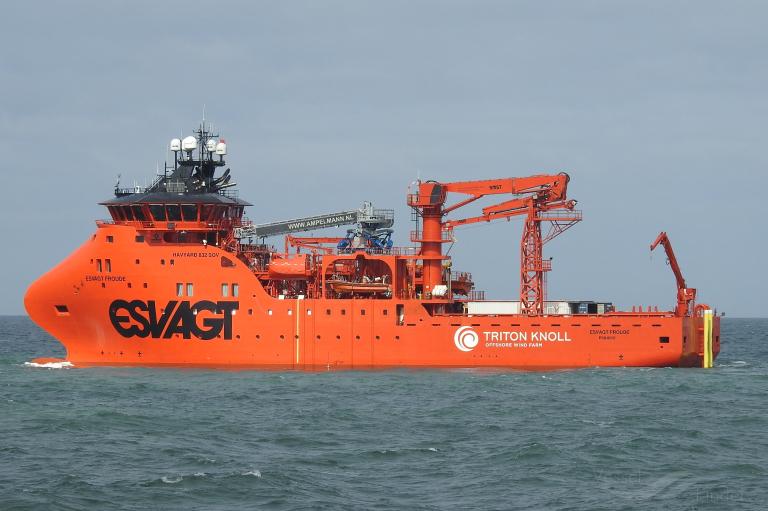ESVAGT grows stronger thanks to smart use of data.
ESVAGT has successfully incorporated digital data collection into daily operations with the SOV ‘Esvagt Froude’. The solution will soon be implemented on several vessels.

‘There’s a series of sensors on a vessel, and their data can be used to run operations in a more ingenious and efficient way. This is the potential we are taking advantage of in order to make operations more efficient’, says Mikkel Damgaard Pedersen, IT Solutions Architect, ESVAGT.
First of all, there’s a considerable amount of manual registration work which can be digitalized; secondly, part of the analysis work can profitably be based on data and artificial intelligence.
‘The potential is immense in many fields. It’s an efficiency improvement that saves time, while at the same time improving the quality of the information being logged. Using existing data instead of manual entries reduces the amount of potential error sources’, says Mikkel Damgaard Pedersen.
More time in operation
Digitalisation will especially free resources from doing registration tasks to instead being part of the active operation. Analyses from ESVAGT have shown that a more ingenious use of existing data alone can save an hour and a half of manual registration work in the vessel’s log – daily.
‘First of all, there is a clear quality boost during the workday, as Officers now can turn their head, freed up time and attention away from the Excel sheet and instead focus on putting their professional vessel competences to good use in an even more consolidated way’, says Mikkel Damgaard Pedersen.
The crew on the ‘Esvagt Froude’ reports that it has eased their daily workload:
‘The system is easy to work with. It eases the workload a lot when there is no need to generate a daily report after the operation. We are very pleased with it’, says Lars Bo Knudsen, Chief Officer on the ’Esvagt Froude’, where the solution is already implemented.
Millions of data points
A similar solution is on its way to the ‘Esvagt Albert Betz’, where 209 data sources are used for registration. This results in a whopping 1,200,000 data points every single day.
‘When our vessel-generated and sensor-generated data is integrated with the logbook, all elements from the operation are given a range of additional aspects. It’s like moving from kinescope TV to ultra HD’, says Mikkel Damgaard Pedersen.
‘We get a lot more details in. For example, when we log that we have transferred five people from the vessel to a turbine, this log entry can automatically have multiple data points attached to it. This means that in addition to weather and wind and speed and position, which we have always noted, we now receive a lot of supplementary information that could be relevant in a concrete operation or that could make a difference in the next operation when correlated with other data information.
Continuous learning
The learning aspect in specific is very interesting for ESVAGT, emphasizes the shipping company’s DCEO, Kristian Ole Jakobsen:
‘Intelligent use of data is a natural development of the strong experience culture which is ESVAGT’s characteristic feature and DNA’, he says:
‘We have set the standard for safety at sea throughout four decades because we continuously focus on optimising and improving our solutions and processes, just like the evolution of our vessels and boats takes its starting point in the reality in which we operate. In the same way, we will be able to convert our data into better and updated solutions and concepts by conveying learning and observations from our efforts and training’, says Kristian Ole Jakobsen:
‘As market leader on the SOV market, we possess a good amount of knowledge and have direct access to data from our vessels and boats, and for this reason, we have all the preconditions to use this insight in order to improve our SOV concept even further. It will benefit the customers’ operations as well as ESVAGT’, he says.
FACTS:
Among other things, ESVAGT measures stream, wind, fuel consumption, seastate, motor data and movement information.
Source: Esvagt